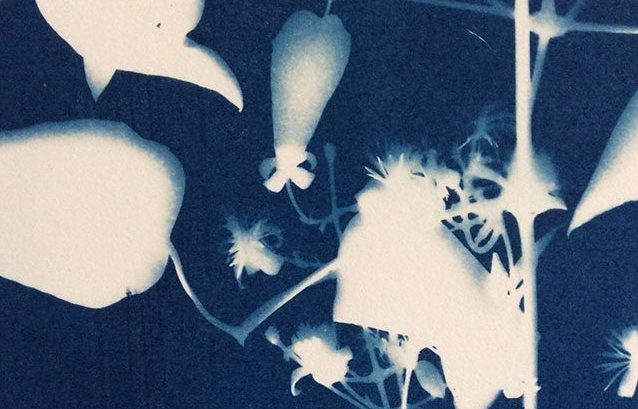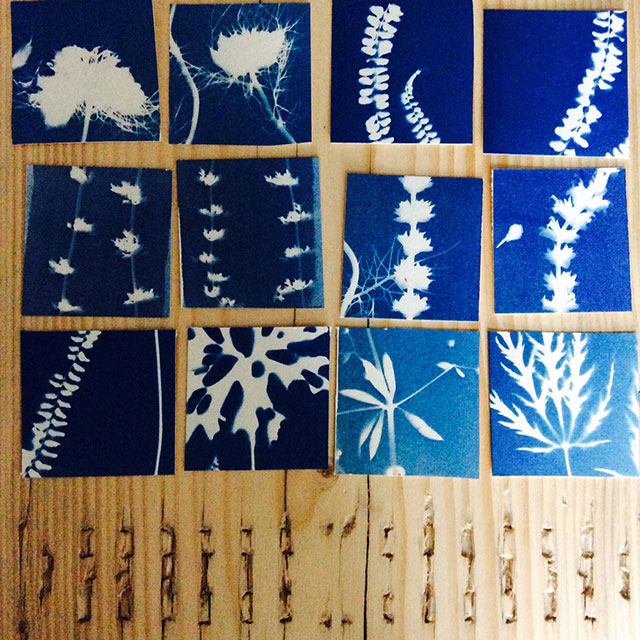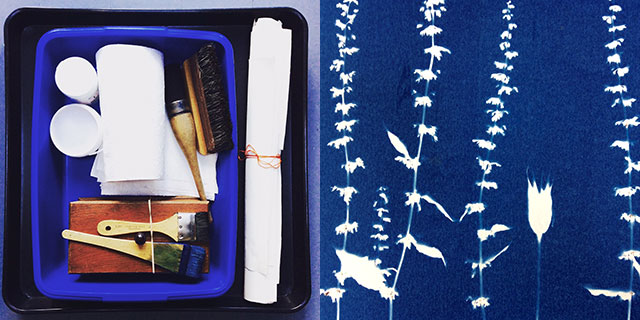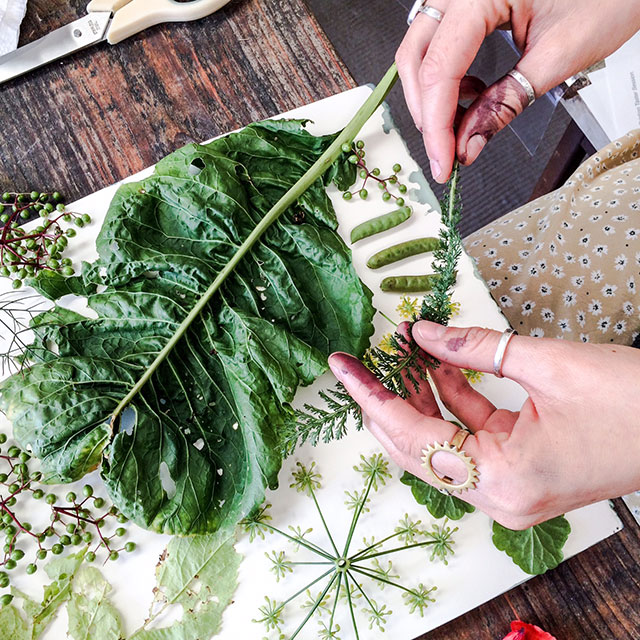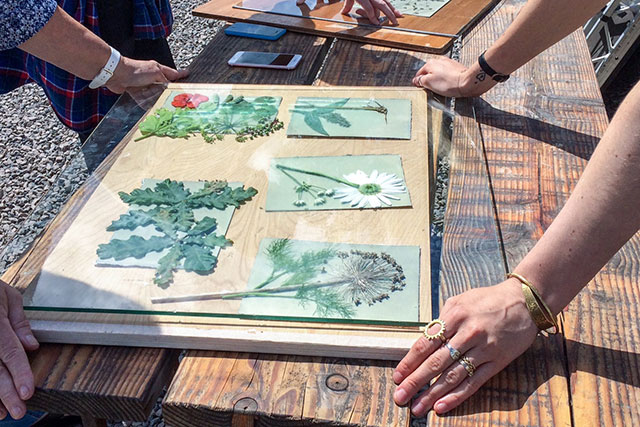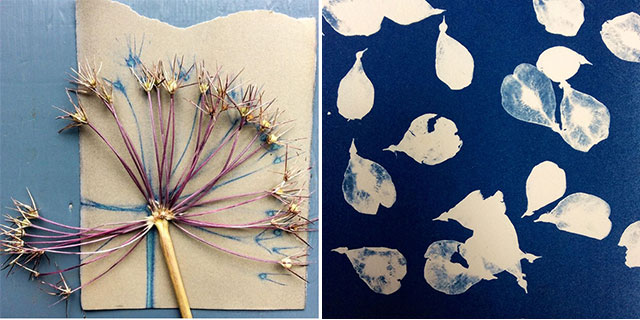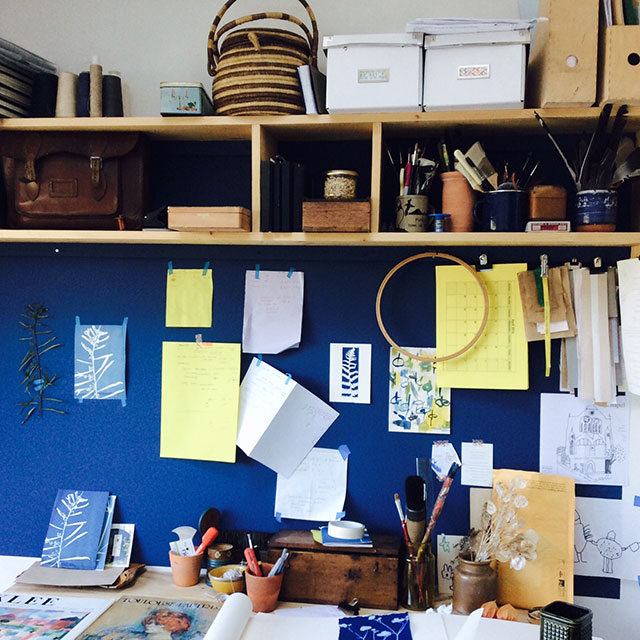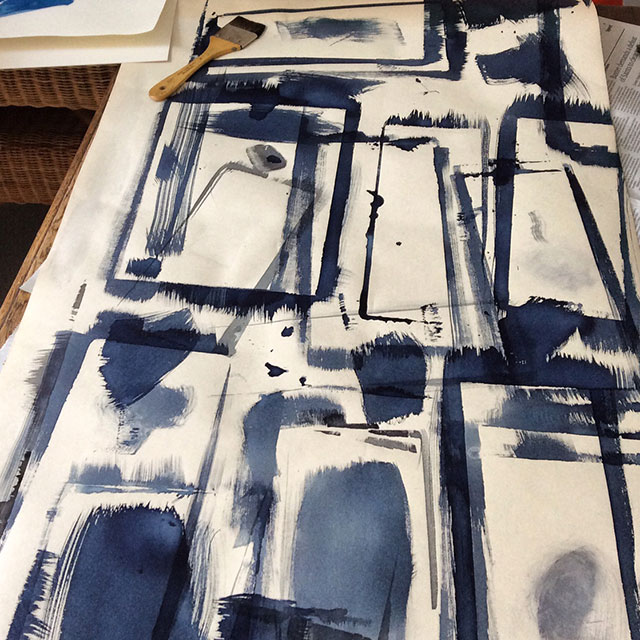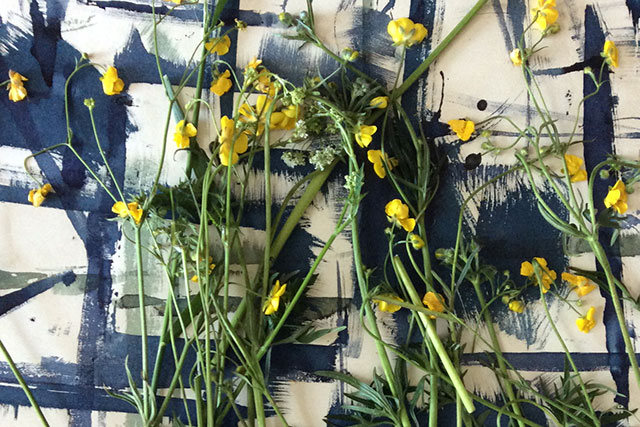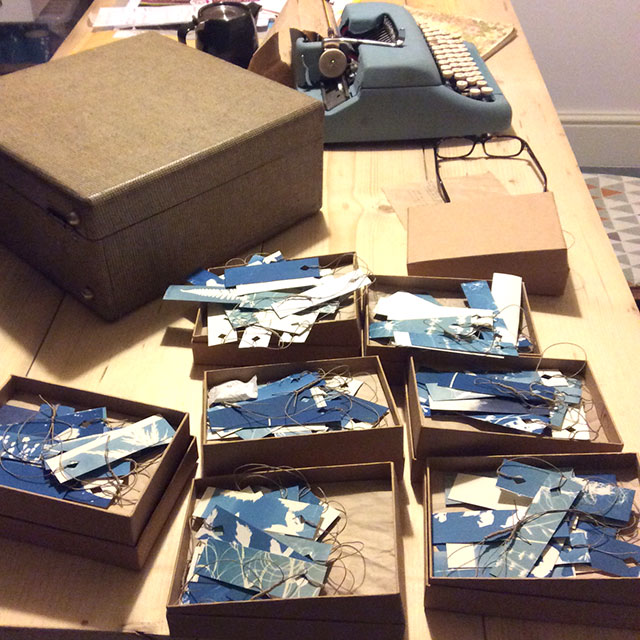Im April diesen Jahres habe ich einen Cyanotypie Kurs gemacht, kaum zu glauben das dies schon so lang her ist. Ich bin echt begeistert von diesem Verfahren und hab im Sommer immer mal wieder kleine blumige Drucke mit bereits präpariertem Papier auf unserem Balkon gemacht. Auf Stoff sieht Cyanotypie auch sehr hübsch aus, nur wegen dem raren Sonnenlicht kann ich dies leider zur Zeit nicht ausprobieren. Aber ich kann mich und euch immerhin mit ein bißchen Inspiration versorgen.
Heute schauen wir dazu nach Wales, wo Ruth Barnes Richards lebt und arbeitet. Als The Daylight Thief schafft sie hübsche Cyanotypien mit Blumen und Pflanzen aus ihrer Umgebung. Schmunzeln mußte ich bei ihrer Antwort auf die Frage, ob sich beim Arbeiten die belichteten Blätter und Blumen dann übers Haus verteilen. Sie sagt der Bereich unter den Treppen wird sogar zu einer temporären Dunkelkammer. Lest selbst.
Earlier this year – in April – I attended a cyanotype class and fell in love with this technique. I bought prepared paper and did some little prints on my balcony this summer, then bought a set of chemicals and cloth to try cyanotype on fabric. This didn’t happen due to life and other ordinary things and now the light is gone and probably won’t come back til March. But seeing blue prints keeps me still excited – also because I can do this technique with just a few tools at home.
So I reached out to Ruth Barnes Richards from The Daylight Thief and asked her how she does it. She lives in Wales in a beautiful countryside and works with flowers and plants that surround her. She makes prints in different sizes, some get framed and others will be turned into journals. I like what she says about working with sunlight vs. UV light and how this affects the prints. Read yourself.
Hello Ruth, please tell us what you do and where do you live?
Hello, I’m Ruth and I live in Chepstow, in Monmouthshire, in Wales. It is a beautiful area, with a lot of deciduous woodland and high limestone cliffs in the River Wye Valley.
You make beautiful Cyanotypes. Please explain the process and how did you come in touch with it?
I make images using Cyanotype, a Victorian photographic printing process. John Herschel (the Astronomer and Photographic pioneer) discovered the process in 1842 during a period of developing and improving the photographic process. It was then used as a simple and low cost process of reproduction, especially of engineering and architectural drawings. The word Blueprint has now entered the English language meaning ‘ A plan or design that explains how something might be achieved.’
Cyanotype is a fairly simple process. The two main chemicals are Ferric Ammonium Citrate and Potassium Ferricyanide. Mixing these two chemicals together results in a light sensitive liquid, (the sensitiser) which can be used to coat many different surfaces. It needs exposure to sunlight and washing in water to develop into the beautiful Prussian Blue of Cyanotypes.
I first read about this process as an art student 20 years ago, as my main area of practice was Photography. As Digital Photography became dominant, I left behind the Darkroom and the techniques involved in producing this form of image. A few years ago, I realised Cyanotype offered an accessible way of working with these familiar processes. I wanted a slower, more responsive, process led way of making images and working with light.
What kind of supplies do you need for making Cyanotypes and where do you store them?
Supplies are fairly basic, alongside the chemicals and bottles to store mixed sensitiser, I have paper, different sized trays for washing prints, glass for placing on top of exposing prints to stop movement and a variety of brushes. I also store a small amount of dried seed heads and leaves mainly for reference, occasionally I use them to make work.
How do your surroundings inspire your art?
My work is completely inspired by the plants in my surroundings; one of the most enjoyable aspects of my working process is making images in direct response to the weather conditions and the seasonal plants.
Do you have a favourite plant to work with or a favourite place to collect flowers?
My favourite plant to print from is the wild clematis Travellers Joy, also known as Old Mans Beard. I love these old Folk names! It has a small creamy white flowers in spring that gradually turn to a fluffy seed head that look like stars or fireworks when printed. It is a climber and the hedges in my area are filled with it. I also love to bring it in to the house at Christmas.
Where do you work mostly?
I work outside with natural light. As I live in Wales, the sunlight is only viable (strong enough) to print with from April to September. UV light has a great advantage in that it can be used indoors and throughout the year, but it gives a very uniform, flat print, devoid of the nuances of daylight. Working with sunlight allows the print to be a direct representation of the season, the time of day and the weather conditions. The strength of the UV rays and the position of the sun in the sky gives differing shades of blue, crispness of outlines and shadow. A print made at midday on a clear June day with a full sun directly overhead differs completely to one made with September light on a misty day. This is an intrinsic part of my work.
Do you have a dedicated space for making your art? Can you have things laying around when the family is coming home or do you need to put things away?
Supplies are stored in a small workspace at home and printing sessions take place on the dining table and prints are washed in the kitchen. It is always a balancing act sharing a domestic space with a work space and my kids are used to coming home from school to find prints covering every surface in the kitchen or the shoe cupboard under the stairs turned into a temporary darkroom and full of drying sheets of sensitised paper…..sometimes this works well, other days not so well!
Where can we find you online?
I have a website thedaylightthief.com and regularly update Instagram with news and new work @The_Daylight_Thief.
Thank you so much for sharing your process, workspace and beautiful pictures with us! Ruth offers Workshops, so if you’re in the Wye Valley area check out the next dates for May, June and August 2018 here.
All images by Ruth Barnes Richards.
